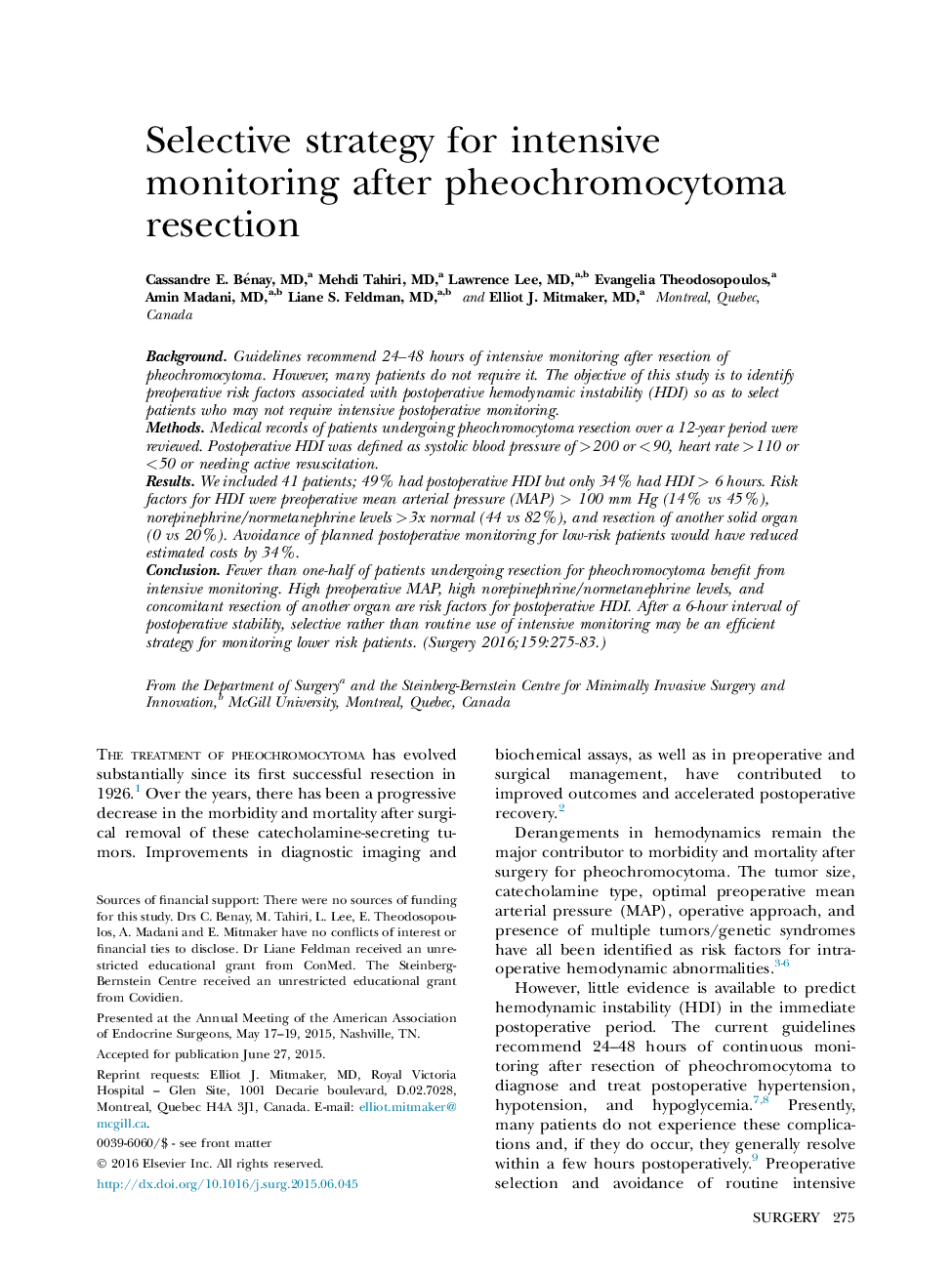| Article ID | Journal | Published Year | Pages | File Type |
|---|---|---|---|---|
| 4306659 | Surgery | 2016 | 9 Pages |
BackgroundGuidelines recommend 24–48 hours of intensive monitoring after resection of pheochromocytoma. However, many patients do not require it. The objective of this study is to identify preoperative risk factors associated with postoperative hemodynamic instability (HDI) so as to select patients who may not require intensive postoperative monitoring.MethodsMedical records of patients undergoing pheochromocytoma resection over a 12-year period were reviewed. Postoperative HDI was defined as systolic blood pressure of >200 or <90, heart rate >110 or <50 or needing active resuscitation.ResultsWe included 41 patients; 49% had postoperative HDI but only 34% had HDI > 6 hours. Risk factors for HDI were preoperative mean arterial pressure (MAP) > 100 mm Hg (14% vs 45%), norepinephrine/normetanephrine levels >3x normal (44 vs 82%), and resection of another solid organ (0 vs 20%). Avoidance of planned postoperative monitoring for low-risk patients would have reduced estimated costs by 34%.ConclusionFewer than one-half of patients undergoing resection for pheochromocytoma benefit from intensive monitoring. High preoperative MAP, high norepinephrine/normetanephrine levels, and concomitant resection of another organ are risk factors for postoperative HDI. After a 6-hour interval of postoperative stability, selective rather than routine use of intensive monitoring may be an efficient strategy for monitoring lower risk patients.
